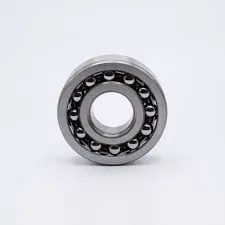
Nov . 28, 2024 05:55 Back to list
Understanding the Function and Structure of Tapered Roller Bearings in Machinery
Understanding Taper Roller Bearings Design, Function, and Applications
Taper roller bearings are a crucial component in many engineering applications, providing reliable support and reducing friction in rotating machinery. These bearings are particularly notable for their design, which facilitates the handling of both radial and axial loads, making them ideal for a variety of applications. This article will explore the fundamental characteristics of taper roller bearings, their applications, and the advantages they offer.
Design and Structure
Taper roller bearings are constructed from an inner ring (cone), an outer ring (cup), and a set of tapered rollers. The unique design features the rollers arranged in a way that their axes converge at a common point, which is typically on the surface of the outer ring. This design allows for increased contact area between the rollers and the raceways, enabling the bearing to support higher load capacities compared to standard cylindrical roller bearings.
The cone and cup are designed to fit together precisely, allowing the rollers to maintain consistent contact under varying loads. The tapered surface of the rollers effectively distributes the load throughout the bearing, reducing the risk of premature wear and extending the lifespan of the component.
Functionality
The primary function of taper roller bearings is to support rotating shafts while enabling smooth movement. They efficiently handle both radial loads (perpendicular to the shaft) and axial loads (parallel to the shaft), making them particularly suitable for applications where these types of loads are present simultaneously.
One of the advantages of taper roller bearings is their capacity for adjustment. As these bearings wear over time, they can be adjusted to maintain proper clearance and alignment. This adaptability is crucial in applications where precise operation is vital, such as in automotive wheel hubs and heavy machinery.
Applications
Taper roller bearings are widely used across various industries, owing to their robust design and versatile load-handling capabilities
. Some common applications include
what is taper roller bearing

1. Automotive Industry Taper roller bearings are commonly found in vehicles, especially in wheel hubs, where they provide necessary support for the axle and allow smooth rotation of the wheels. They also appear in transfer cases and gearboxes to manage both radial and axial loads.
2. Industrial Machinery In heavy machinery, taper roller bearings support rotating shafts in applications like conveyor systems, cranes, and wind turbines. Their ability to withstand heavy loads and vibrations makes them critical to operational efficiency in these environments.
3. Aerospace The aerospace industry relies on taper roller bearings for their reliability and performance in high-stakes environments. They are utilized in engines and landing gear systems, where precise load management is essential.
4. Railways Taper roller bearings are also employed in railway applications, particularly in the bogies and wheelsets, where they support large axial loads and maintain stability during operation.
Advantages
The advantages of taper roller bearings are numerous. Their ability to handle both radial and axial loads, combined with their adjustability, provides manufacturers and engineers with a reliable option for diverse applications. Furthermore, the tapered design reduces friction, which not only enhances the performance of the machinery but also contributes to energy efficiency.
In addition, taper roller bearings typically have a longer lifespan compared to other types of bearings due to their enhanced wear resistance and ability to maintain proper alignment over time. This durability ultimately leads to reduced maintenance costs and improved operational productivity.
Conclusion
Taper roller bearings play an essential role in modern machinery and vehicles, offering a unique blend of load-handling capabilities, durability, and efficiency. As industries continue to evolve and demand higher performance standards, the significance of taper roller bearings in ensuring the reliability and longevity of equipment cannot be overstated. Understanding their function, design, and applications will empower engineers and manufacturers to make informed decisions that drive innovation and progress in their respective fields.
Latest news
-
Grooved Ball Bearing Design and Functionality
NewsJun.04,2025
-
Concrete Mixer Bearing Load Capacity Testing
NewsJun.04,2025
-
6004 Bearing Dimensions in Robotic Joint Designs
NewsJun.04,2025
-
Advantages of Single-Row Deep Groove Ball Bearings
NewsJun.04,2025
-
Applications of Deep Groove Ball Bearings in Automotive Systems
NewsJun.04,2025
-
Innovations in Bearing Pressing Machine Design
NewsJun.04,2025
